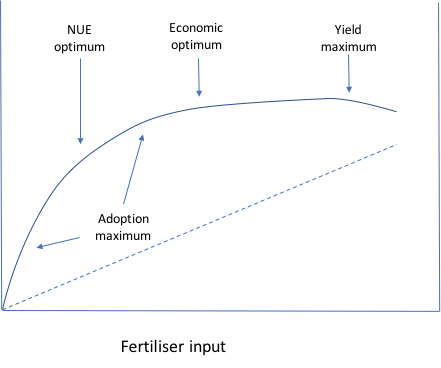Expert Blog Series: Adoption level is the most underestimated factor in fertiliser recommendations (Blog 1)
Dr. Christy van Beek, director of the SoilCares Foundation and expert in soil fertility and food security, explains in several blogs why she believes adoption level is the most underestimated factor in fertiliser recommendations. In this first blog she will share her main conclusions about what 20 years of experience has taught her.
[Blog 1] What 20 years of experience has taught me about making fertiliser recommendations
A fertiliser recommendation serves to provide the land-user, who is most often a farmer, with advice on how best to manage the fertility, i.e. the productive capacity, of his or her land. Putting it like this, it seems like a remarkably simple exercise. Then why is there so much fuss about it? After nearly 20 years of research in soil fertility and nutrient management I came to some conclusions...
The key is in the application of the fertilisers, not in the fertilisers themselves
Let’s first get into the fuss... fertiliser recommendations typically address mineral fertilisers that is those fertilisers that originate from mines (P and K) or from air (N). There are some terrible stories of what can happen when mineral fertilisers are used in the wrong way…
In 2015 the report ‘A Soiled Reputation’ on the adverse impact of mineral fertilisers in (tropical) agriculture was published. It fueled the (sometimes fierce) discussion between supporters of ‘organic’ fertilisers and those who use ‘mineral’ fertilisers. However, the key is in the application of the fertilisers, not in the fertilisers themselves. Compare it with food: there is nothing wrong with food by itself, there are only wrong food habits. Fertiliser applications are like food habits: you have to know what you are doing, otherwise the cure may become a cause. So, when properly addressed, fertilisers, preferably a combination of mineral and organic sources, can have a great and positive impacts on crop growth and food production.
Fertiliser recommendations, that are environmentally sound and support plant growth, maintain soil health
Notably, about 50% of the global population depends on mineral fertilisers for their food intake (2). I am absolutely in favour of organic fertilisers, but simply banning mineral fertilisers would be a cruelty against mankind. So, what we need to do is to make proper fertilisers. There is a great review (3) about some popular myths in soil fertility, many of them relating to confusion about the sources of fertilisers. The authors conclude “These myths need correction if we are to harness the role of science in the overall goal of assisting farmers to address the acute problems of poor soil fertility for smallholder farmers in sub-Sahara Africa”. I cannot agree more. We need fertiliser recommendations that support plant growth, maintain soil health and that are environmentally sound.
What makes a proper fertiliser recommendation?
What makes a fertiliser recommendation a proper one? Well...that depends on the objective of the recommendation. Scientists typically distinguish 3 objectives:
- maximum yield level
- maximum rate of return
- maximum crop response, for example the highest yield response per amount of fertiliser applied.
The 3 different objectives are visualised below.

Figure 1. Scientists often distinguish 3 types of fertiliser recommendation objectives based on either crop performance (maximum yield or maximum response) or on economic performance. In this paper the objective of maximum adoption is put forward.
New objective for fertiliser recommendations: the adoption maximum.
However, in my view, the most important objective, at least for developing countries, is often missing, namely the highest adoption level. I therefore hereby put forward a new objective for fertiliser recommendations: the adoption maximum.
A perfect recommendation is pointless without the adoption of the farmer
Adoption is the extent to which people are willing and capable of bringing a recommendation into practice. Thus there is little relevance of developing a recommendation that is not brought into practice. And here is the shocking news: adoption rates of fertiliser recommendations are often appallingly low. They are typically less than 50% (4). In other words: you can make a beautiful (near to perfect) recommendation, but what is the point when it is not adopted by farmers?
Factors that influence the adoption of smallholder farmers
This brings me to my favourite hobby-horse: the issue of fertiliser adoption by (especially) smallholder farmers. I am increasingly intrigued by this topic, it is so fascinating! But I will talk about that subject more in my next blog where I will discuss the factors that influence the adoption of smallholder farmers.

